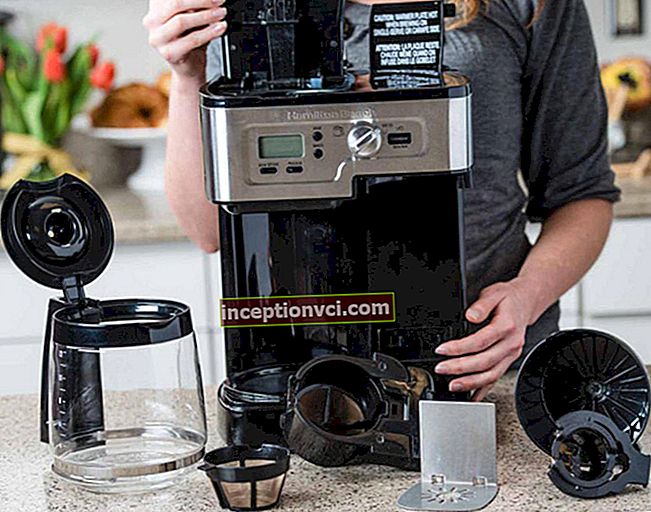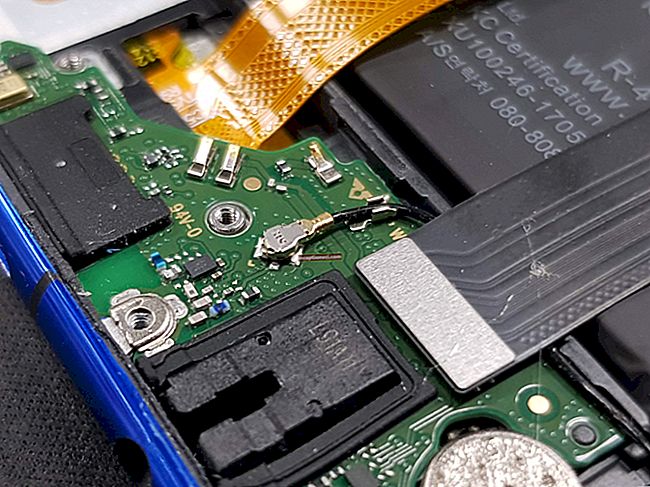Canon Powershot G6 review
The PowerShot G range of one of the leaders in the digital photography market - Canon company - has expanded, according to the manufacturer, the "professional super compact" G6, significantly changed from its predecessor G5. The first thing that catches your eye is the "new" color of the case. The Canon G6 is now back in silver, just like the long-forgotten G3. But the main transformations are not as noticeable externally as they are perceptible when working with a camera.

First of all, the CCD resolution has increased from 5 to 7.1 megapixels, and the maximum image size has reached 3072x2304 pixels - the equivalent of an A3 printout.
Contrasted with the outward elegance of the compact Canon PowerShot S series, the body of the G6 has a classic body design that feels like a real camera in the traditional sense of the word. It is 10% more compact than the G5, but still far from the smallest. The logical arrangement of the buttons and control dials of the camera is encouraging: the D-Pad is now located not in the upper right corner of the back of the case, like in the G5, but directly to the right of the LCD. Undoubtedly, this is a better design solution. Like all models in the PowerShot series, the G6 has a massive grip for greater comfort and reliability. The index finger freely presses the shutter button and manipulates the focal length dial and mode dial.
The LCD display has also not been overlooked: its size has been increased to 2 inches diagonally. The display can be rotated 270 degrees, and when you take a self-portrait, a mirror image is automatically created.
An excellent alternative to the LCD is the optical viewfinder, which allows diopter adjustment and reproduces 84% of the frame area. On the G5, the top of the lens was in the viewfinder's field of view. Canon's professional team has effectively eliminated the previous error.
The shooting mode dial rotates 360 degrees. With it, you can select one of 12 exposure modes: manual and program settings, shutter speed or aperture priority modes and automatic mode, as well as preset scene programs Portrait, Landscape, Night Scene, Panorama and two custom modes, which are used to memorize previously performed installations. The disc itself is shifted closer to the viewfinder - thus, users have added problems with its scrolling - a very unusual location. Although, it's all a matter of habit.
After pressing and turning the On / Off button, wait 3 seconds while the G6 warms up its "motor" and sets the lens to the working position. Recording a single image takes approximately 1.5 seconds (called a frame cycle), provided the maximum image size and quality is selected. However, in order to achieve this, you will have to turn off the image viewing function. We experimented a bit, flicking the shutter vigorously, and found that the camera consistently fires 20 frames before the buffer memory fills up.
The On / Off switch also sets the image viewing mode. The lack of such a convenient quick view key is disappointing, but you can easily return to recording mode by pressing the shutter button.
With its wide range of features, the G6 is likely to become a desirable work tool for professionals looking for a spare camera for their day-to-day use. The G6 can be adjusted from f / 2.0 to f / 8 with shutter speeds ranging from 1/2000 to 15 seconds. These parameters are easy to set by turning the setting wheel.
This Canon model offers seven different white balance settings, including two custom white balance settings for the most commonly used settings.Exposure compensation ranges from +/- 2 EV in 1/3 steps, and Auto Bracketing lets you shoot three shots at an exposure level that deviates from standard values within a specified range. There are two continuous shooting modes - high-speed (the camera processes 14 frames at 2 fps) and normal, in which the shooting speed is reduced to 1.2 fps, but the number of saved photos increases to 23. Unfortunately, if the high-speed mode is selected (High Speed), the LCD monitor turns off when you press the shutter button.
Many useful settings can be found in the Focus menu. The ISO range is set from 50 to 400, and the exposure compensation is from -2 to +2 EV in 1/3 steps. Well, how can you do without special photographic effects - such as brightening the color (Vivid), neutral sepia (Neutral Sepia) or a slight blur. The camera has a whole arsenal of autofocus settings; by the way, its speed is increased by 55%. The G6 is the first camera in the series to feature a 9-point Intelligent AF system with a movable zone that lets you define the area in the frame that will be used for metering and focusing.
Canon G6 shoots very high quality, preserving the natural color gamut and good detail. In short, if you are a professional and the prospect of carrying a "duty DSLR" with you does not always entice you - pay attention to this camera. We also recommend the same for advanced amateur photographers with creative ambitions.
Contents of delivery
- Rechargeable lithium-ion battery
- ZoomBrowser software
- PhotoStitch 3 software.
- 32 MB CompactFlash memory card
- Remote control
- ArcSoft PhotoStudio program
- Manual
- Belt
- AV cable
- USB cable
- Lens cap
- Charger
Key points
Design
The camera body is generally solid. However, the design uses somewhat unreliable plastic latches that protect the memory card slot and connectors. Be careful with them - breaking them is easier than you think
Interfaces
The AV connector, DC adapter jack and USB port are hidden under the plastic door on the left in the case. Also includes a hot shoe platform for flash connections
Lens
Focal length 7.8-28.8 mm at aperture f / 2.0-3.0. By pressing the button under the lens and having previously detached the ring, it will be possible to install a special adapter or additional converters
D-PAD manipulator
There are practically no problems in working with the manipulator, although it is too small. When the camera is switched to any of the Record modes except Auto, the up and down arrows are used to adjust exposure compensation and white balance, respectively.
Batteries
The package includes a Lithium-ion BP 511A battery and a charger. One charge should be enough for 6 hours of continuous use or 600 shots
Memory card
The memory cards used are CompactFlash I and II and Microdrive. The box with the camera contains a memory card with a capacity of only 32 MB, so immediately consider buying an additional one. We used a 256MB memory card that can hold 40 RAW images
Navigation
The main menu is divided into three subsections - Record, Playback and Setup. The choice of commands is carried out using the D-Pad. The basic settings related to shooting are summarized in the Record submenu. Press the Function button and make the necessary adjustments to these parameters.
pros
- Ability to save image files in RAW format
- Rich functionality
- Compatible with a wide range of Canon accessories and devices
Minuses
- Unreliable plastic latches
- LCD monitor functionality is limited when using continuous shooting mode
Specifications (edit)
Model - Canon PowerShot G6
Megapixels - 7.
Maximum resolution - 3072x2304
Lens - f / 2.0-3.0 (35-140mm)
Zoom - 4x optical, 4x digital
Focus range - 50cm - infinity, macro mode: 5cm
Excerpt - 15-1 / 2000 sec
ISO - auto, 50, 100, 200, 400
Exposure modes - auto, program, manual, aperture / shutter priority, scene programs
Exposure metering - evaluative, point, center-weighted
Flash mode - auto, red-eye reduction, slow sync, forced on / off
Interface - USB, A / V, DC
Weight - 380 g (without battery)
Dimensions (edit) - 104.9x72.8x73.1 mm
Batteries - Lithium-ion
Memory cards - CompactFlash I and II, Microdrive
LCD display - 2.0 inches









